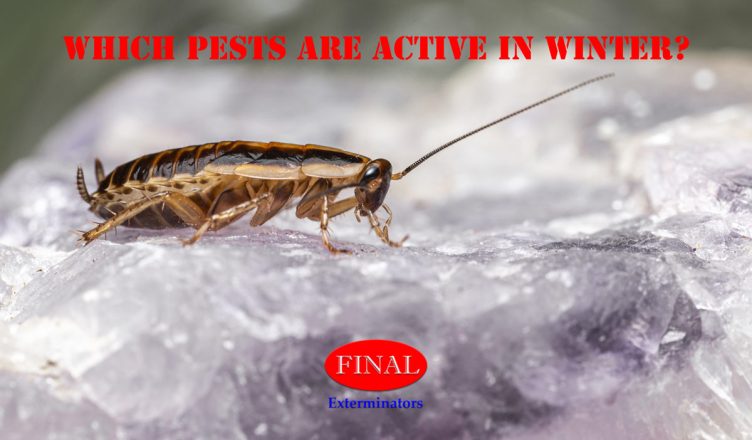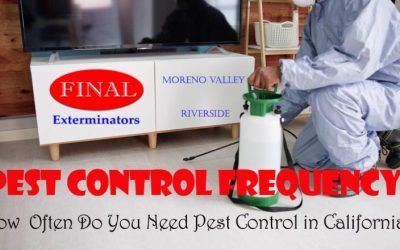Winter is a season of survival and adaptation for both humans and pests. Some people enjoy the beauty and fun of snow and ice, while others suffer from the cold and darkness. Likewise, some pests face difficulties or death in winter, while others thrive or adjust. Winter pests include rodents, insects, spiders, and other organisms that can invade homes and properties, damage crops and structures, and spread diseases and allergens. But how do winter pests cope with the harsh conditions and scarce resources of winter? And how can we efficiently prevent and control them?
This article explores the fascinating behavior of and their adaptation in winter. We will investigate which pests stay active in winter and which pests go into dormancy, and how this affects their population dynamics and pest management. We will also assess the pros and cons of different pest control methods in winter, and provide some advice and recommendations for homeowners and farmers to prevent and control pest infestations.
Contact Final Exterminators for professional and affordable pest control services in Riverside and Moreno Valley, CA. Get a free estimate and enjoy a pest-free season. Call now: 866-719-7661
Winter Pests and Their Adaptations in Riverside and Moreno Valley
The winter season in Riverside and Moreno Valley is typically warm and arid, with average temperatures between 43°F and 68°F. However, some winter events can cause snow and ice to fall in the area. As humans dress warmly and stay inside, the insects in the region have evolved amazing biological adaptations to cope with the cold. So, some pests that do not go dormant in winter are termites, carpenter ants, bed bugs, fleas, and mosquitoes. In the next sections, you will learn how these creatures adapt to the cold season.
Freeze Tolerant and Freeze Avoidant in Winter Pests
Some pests can withstand internal ice formation, while others have the ability to prevent it and supercool their bodies. Below are some pests that exhibit each adaptation:
- Freeze-Tolerant Pests: Woolly bear caterpillars, gall flies, and some beetles can make proteins, boost water channels, and gather substances to survive freezing.
- Freeze Avoidant Pests: Cockroaches, spiders, rodents, ants, ladybugs, boxelder bugs, and cluster flies can produce antifreeze, reduce water, and supercool to avoid freezing.
- Nature’s Antifreeze pests: These pests can make their body fluids antifreeze, lose water, and supercool to prevent freezing in winter. Cockroaches, spiders, rodents, ants, ladybugs, boxelder bugs, and cluster flies are some of them.
Dehydration in Winter Pests
Some pests can avoid freezing by reducing their body water content. This lowers the temperature at which their body fluids freeze, and also decreases the ice formation and damage in their body. Cockroaches, spiders, rodents, ants, ladybugs, boxelder bugs, and cluster flies are some pests that use dehydration as a winter defense.
Migration of Winter Pests
Some pests escape the cold by migrating to warmer areas or entering human structures. For instance, mosquitoes can fly to warmer regions or overwinter in places like basements, sewers, or drains. They migrate to human dwellings to find warmth and shelter, sneaking into cracks, gaps, and even our living spaces. It highlights the need for winter-proofing homes to keep these unwanted invaders out.
Insulation or Insulated Areas of Winter Pests:
Termites can construct mud tubes that keep their colonies at a constant temperature and humidity level which is a kind of insulation technique. Many pests also look for insulated areas in their environment, such as piles of leaves, stacked wood, or under the snow. These areas provide them with warmth and shelter until the weather becomes warmer.
Continuous Reproduction in Winter Pests
Some pests can continue to reproduce and increase their numbers in winter if they have access to food and shelter. For instance, bed bugs and fleas can lay thousands of eggs in their lifetime, and survive the cold by hiding in mattresses, furniture, clothing, carpets, bedding, or on pets or wildlife. Unfortunately, these pests can cause damage and spread diseases and allergens.
Dormancy, Hibernation, and Overwintering in Pests
There are some words to explain how some pests deal with the cold and lack of food in winter: Dormancy, hibernating, and overwintering. Here is how they differ:
- Dormancy is a broad term for a resting or inactive state in which metabolism is low and development is stopped. It can vary depending on how severe and long the condition is.
- Hibernating is a specific kind of dormancy in which the body temperature and metabolic rate fall a lot, and the activity and responsiveness are very low. It often involves entering diapause, a dormant state caused by environmental cues.
- Overwintering is the way pests get through or wait out the winter. It can involve hibernation, migration, or other ways to survive the cold.
Some examples of pests which are not active during winter are:
- Male mosquitoes, which die in winter
- Some female mosquitoes which hibernate in hollow logs or other hidden places
- Ladybugs that hibernate in big groups, often inside houses, under siding, or in wall spaces.
- Boxelder bugs, that hibernate in dark places, such as attics, basements, or cracks in walls.
- Cluster flies, which hibernate in attics, wall spaces, or other isolated areas.
How to Avoid Winter Pests Infestations?
To prevent pests from invading your home during the cold season, you need to take care of both the inside and outside of your house:
- Start by sealing any cracks, holes, or gaps in your home exterior, especially where pipes or wires enter the house. This will prevent pests from finding entry points.
- Next, check your yard for anything that might attract pests, such as standing water, leaf piles, or wood piles. Remove them or keep them away from your house. Also, cut back any overgrown plants or bushes, and avoid having water, mulch, or other lures near your house. This will reduce the food and shelter sources for pests.
- Then go inside your house and thoroughly clean and disinfect it. This includes every room. Make sure you vacuum the carpets, mop the floors with hot water, wipe the counters, wash the bedding and clothes with hot water, and store the food in sealed containers. This will eliminate any crumbs, spills, or odors that might attract pests.
- Also, keep your basement, crawlspace, and attic well-ventilated and dry, and fix any leaks or drips. This will prevent moisture and mold problems that might attract pests.
- Finally, check your vents and chimneys, and inspect your roof and siding for any damage. This will prevent pests from nesting or hiding in your house.
We can help you with any pest problem, big or small, and ensure your home is pest-free and cozy all winter long. Whether you need a one-time treatment or a regular maintenance plan, we have the right solution for you. Don’t wait, call us now: 866-719-7661
Pest Control Methods for Controlling Winter Pests
There are four types of pest control methods in winter: biological, chemical, physical, and cultural. Each type has its pros and cons, depending on what kind of pest, how many pests, how much money, and how much effect on the environment. Check the summary of each type below:
Biological Pest Control
Biological pest control uses pests’ exterminators, like hunters, parasites, or germs, to reduce or stop their reproduction. For example, ladybugs fight aphids, and nematodes kill grubs. The pros of biological pest control are that it is safe, effective, and sustainable, as it spares other organisms and prevents resistance. The cons are that it is slow, unsure, and hard to monitor, as it depends on weather, availability, and compatibility.
Chemical Pest Control
Chemical pest control uses substances, like pesticides, to kill or repel pests. For example, pyrethroids kill mosquitoes, and neem oil deters mites. The pros of chemical pest control are that it is fast, reliable, and easy, as it can target many or a few pests. The cons are that it can be harmful, expensive, and unsustainable, as it can affect humans, animals, soil, water, and air, or cause pest problems.
Physical Pest Control
Physical pest control uses barriers, traps, or devices to keep out, remove, or kill pests. For example, screens stop flies, or sticky traps catch rodents. The pros of physical pest control are that it is safe, cheap, and simple, as it does not use chemicals or biological agents. The cons are that it is hard work, time-consuming, and ineffective, as it only handles existing or a few pests, and may not stop future infestations.
Cultural Pest Control
Cultural pest control uses practices or behaviors to make the environment or the host less appealing for pests. For example, sanitation removes food and water for pests, or crop rotation disrupts pest life cycles. The pros of cultural pest control are that it is preventive, holistic, and long-term, as it reduces other pest control needs or improves them. The cons are that it is complex, hard, and costly, as it may require habit, attitude, or policy changes, or have trade-offs or conflicts with other goals or interests.
To sum up, different pest control methods in winter have their pros and cons, and the best method varies depending on the case and the objectives of the pest manager. A mix of methods, also called integrated pest management (IPM), can be the most powerful and eco-friendly way to deal with pests in winter.
Winter Pests FAQs
What Are Some Specific And Effective Tips For Farmers to Prevent And Control Pest Infestations in Winter?
• Crop rotation: Plant different crops in the same field in different seasons or years. It leads to Breaking pest life cycles and starving them of hosts.
• Cover cropping: Plant crops that cover the soil and protect it from erosion, weeds, and pests. Moreover, it could improve soil fertility, water retention, and biodiversity.
• Intercropping: Plant two or more crops together in the same field. Since increasing crop diversity attracts beneficial insects and creates unfavorable conditions for pests.
What Happens to Termites In Winter?
Termites can live through the winter in your house by remaining in their nests, which they typically build under the ground, within wood, or behind walls. And the bad news is they can harm your home severely by consuming wood and other substances that have cellulose.
Where Are Cockroaches During Winter?
Cockroaches are able to survive the cold season in your house by finding cozy, damp, and dim spots, such as cooking areas, washing areas, or drying areas.
Are There Any Wasps During Winter?
Wasps are able to live through the cold season as fertilized queens, which look for protection in hollow trees, roofs, or wall spaces.
What Should I Do With Ants in Winter?
To get rid of ants in winter, you can use ant baits that kill the whole colony. Put them where you see ants most, but keep them away from kids and pets. You should also keep your house clean by storing food properly, wiping and vacuuming regularly, and removing trash often. Ants can come in through cracks or holes, so seal them with caulk, weather stripping, or screens. If these steps don’t work, you may need a professional pest control service.
What Happens to Mosquitoes In Winter?
Mosquitoes are able to survive the cold season as eggs, larvae, pupae, or adults, depending on the type and the weather.
How to Deal with Winter Pests: Tips and Solutions From Finalexterminators
Winter pests can be more of a bother than in other seasons. Since some insects and pests migrate to warmer places in winter, areas with less cold winters than surrounding areas may have more pest issues. Therefore, we should not assume that pests are gone just because they are not visible outside. We should understand their behavior and adaptation in winter, and apply the appropriate pest control methods to prevent and control them. One effective way to do this is by running a proactive Integrated Pest Management program, which can provide a comprehensive solution to your pest problems. If you need help with pest prevention or removal in Moreno Valley and Riverside, CA, Final Exterminators can offer you many options for your winter pests. Contact us today for more information.
 Get Started Now. Give us a call at(800) 953 1397
Get Started Now. Give us a call at(800) 953 1397



0 Comments